“This Can’t Be Safe. It’s Got to Have Bite”: Christopher Nolan and Cast Unleash ‘Oppenheimer’

One windy night in March 2022, in the desert outside Belen, New Mexico, Cillian Murphy was waiting to climb a 100-foot steel tower, a copy of the one that held the first nuclear bomb ever detonated in 1945. The conditions were right for summoning the emotion of the historic scene the Irish actor was about to play as physicist J. Robert Oppenheimer. “You could see this sand coming up off the desert and the skies were ominous,” Murphy says. “I remember thinking, ‘Oh my God, this is fucking great.’ “
Nearby, as gusts whipped at the production tents, producer Emma Thomas was having the opposite reaction. “Imax cameras shooting film in the middle of a windy desert. The absolute worst,” says Thomas. “Miserable for people. Terrible for cameras.”
More from The Hollywood Reporter
Read the Book Behind 'Oppenheimer': 'American Prometheus' Is Back on the Bestsellers Chart
'Barbie' and 'Oppenheimer' to Ignite Summer Box Office in Historic Showdown
Robert Downey Jr. and Jimmy Fallon Recall Failed Audition for 'The Holiday'
Though tense for the film crew, the sandstorm on the set of Christopher Nolan’s Oppenheimer replicated the one the scientists and military officers had faced the night before the real Trinity test, as the U.S. Army code-named the effort. And Nolan — the rare filmmaker who can still convince a studio to back such an ambitious movie — was determined to keep shooting. “Chris always gets told that he’s lucky with weather, and I think he is,” says Thomas, who is also Nolan’s wife and the mother of his four children. “But I think he also feels like he creates his own weather.” As it had in 1945 before the nuclear test began at dawn, the wind stilled abruptly, and Nolan got his shots.
It says something about the director’s reputation for a near-religious commitment to big-screen spectacle that when news first broke online about Nolan shooting the Trinity test scene without using CGI, a fair number of movie fans assumed that meant he had literally detonated an atomic bomb on set. “It’s flattering that people would think I would be capable of something as extreme as that on the one hand, but it’s also a little bit scary,” Nolan says during an interview in mid-June, in the Los Angeles offices of his and Thomas’ production company, Syncopy Inc. All the interviews for this story were conducted before SAG-AFTRA called a strike on July 13 — a move which prompted the cast members in attendance that day to walk out of Oppenheimer’s London premiere.
It’s not just in his filmmaking that Nolan prefers to rely on analog methods. He doesn’t use email or carry a smartphone, and when he writes his scripts, he does so on a computer that isn’t connected to the internet. “My kids would probably say I’m a complete Luddite,” he says. “I would actually resist that description. I think technology and what it can provide is amazing. My personal choice is about how involved I get. It’s about the level of distraction. If I’m generating my material and writing my own scripts, being on a smartphone all day wouldn’t be very useful for me.”
Oppenheimer, which chronicles the Manhattan Project’s development of nuclear weapons and the political and emotional fallout for the people who built them, is both an ode to and a cautionary tale about humanity’s ability to harness science and technology. The $100 million movie, which Universal will release July 21, is inspired by the 721-page, Pulitzer Prize-winning 2005 book American Prometheus by Kai Bird and Martin J. Sherwin.
The sprawling, starry cast boasts 79 speaking roles, including Emily Blunt as Oppenheimer’s wife, Kitty; Matt Damon as Leslie Groves, the U.S. Army Corps of Engineers officer who directed the project; Robert Downey Jr. as Lewis Strauss, chair of the U.S. Atomic Energy Commission; and Florence Pugh as Jean Tatlock, a psychiatrist with whom Oppenheimer had a passionate but tortured affair. The group of actors playing the scientists who worked on the Manhattan Project, including Josh Hartnett, Benny Safdie and Swedish actor Gustaf Skarsgard, are so numerous that they have their own WhatsApp group, called the “Oppenhomies.” Kenneth Branagh, Matthew Modine and Gary Oldman also appear. “It was the cast of Ben-Hur,” says Downey. “Everybody would have their moments. There were no small scenes.”

There are seat-rattling explosions, multiple steamy sex scenes and existential stakes. But Oppenheimer is also a biopic of a theoretical physicist, a man whose work is so abstract that it’s impossible to see. It’s R-rated, three hours long, with large chunks shot in black and white on Imax film developed expressly for Nolan and his cinematographer, Hoyte van Hoytema. And it contains a level of moral complexity that doesn’t exactly cry out summer popcorn movie — instead of the fictional CGI cities that are demolished in the third act of most summer films, Oppenheimer’s work led to the destruction of real cities, Hiroshima and Nagasaki, and more than 200,000 casualties.
“[Nolan] said to me, ‘This is the kind of movie that they used to make in the ’90s,’ ” says Damon. “It feels like when an Oliver Stone movie would come out and you’d go, ‘That’s one of the movies I’m going to see this year no matter what, because everyone’s going to be talking about it.’ But those movies have disappeared from the multiplex.”
The seed of Oppenheimer was planted in Nolan’s 2020 science fiction film, Tenet, in which a character references the physicist when comparing the creation of a doomsday device to the development of the first atomic bomb. Robert Pattinson, who co-starred in Tenet, gave Nolan a collection of Oppenheimer’s speeches as a wrap gift, and when Nolan read the speeches the physicist made in the 1950s, after the bombings of Hiroshima and Nagasaki, he saw the makings of a fascinating character study. “When you read the words of people speaking at that time, you see them wrestling with the implications and the consequences of what’s happened and what they’ve done,” Nolan says. “I started to get very excited about, rather than using it as an analogy in a science fiction sense, telling the actual reality of the story, really trying to be there, to give people the experience of what it would have been like to be Oppenheimer in those moments.”
Nolan, 52, grew up in the U.K. at the height of nuclear anxiety. In the 1980s, he watched as young people flocked to join the country’s growing Campaign for Nuclear Disarmament, saw movies like the 1986 animated nuclear disaster film When the Wind Blows and heard the 1985 Sting song “Russians,” which includes the line, “How can I save my little boy from Oppenheimer’s deadly toy?” Nolan became fascinated by one point he learned over the years, which would come to animate him as a filmmaker: that there had been a moment when the Manhattan Project scientists realized they couldn’t completely eliminate the possibility of a chain reaction from an atomic bomb that would set fire to the atmosphere and destroy the world. “In the absence of being able to completely eliminate the possibility, they went ahead and pushed the button,” Nolan says. “That’s an incredible room to be in, an incredibly dramatic moment to take an audience to.”
The resulting movie is “sort of an origin story in a strange way, not a million miles away from the things we were doing with Batman and the Dark Knight trilogy,” Nolan says. “I got excited by his intellectual curiosity and adventurism in the 1920s, which was shared by all his peers. It was a revolution in physics that corresponded very closely to all the other revolutions in all aspects of life — the music of Stravinsky and modernism and literature, Picasso painting.”
One of the most unusual creative choices Nolan made was to write much of the script in the first person, including stage directions — instead of “Oppenheimer walks into the room,” for instance, the script reads, “I walk into the room.” Nolan did this, he says, to distinguish between two timelines: one from Oppenheimer’s point of view, shot in color, and the other, more objective, in black and white. The script detailed how Nolan planned to make the conceptual physics real for an audience through use of image and sound. “What does it look like, how things exploded and crashed against each other,” says Blunt. “All the visuals were very detailed in his stage descriptions.” Tonally, the movie would have to take the audience from the triumph of scientific achievement to the devastating realization of its impact. “Very often when you’re planning a film, whatever the most seemingly difficult challenge is, the way to deal with it is to embrace it as the biggest strength of the material,” Nolan says. “For me, the idea of going with these scientists from the absolute highest high to the lowest low in as dramatic and compressed a way as possible, that became the hinge point, the engine of the film.”
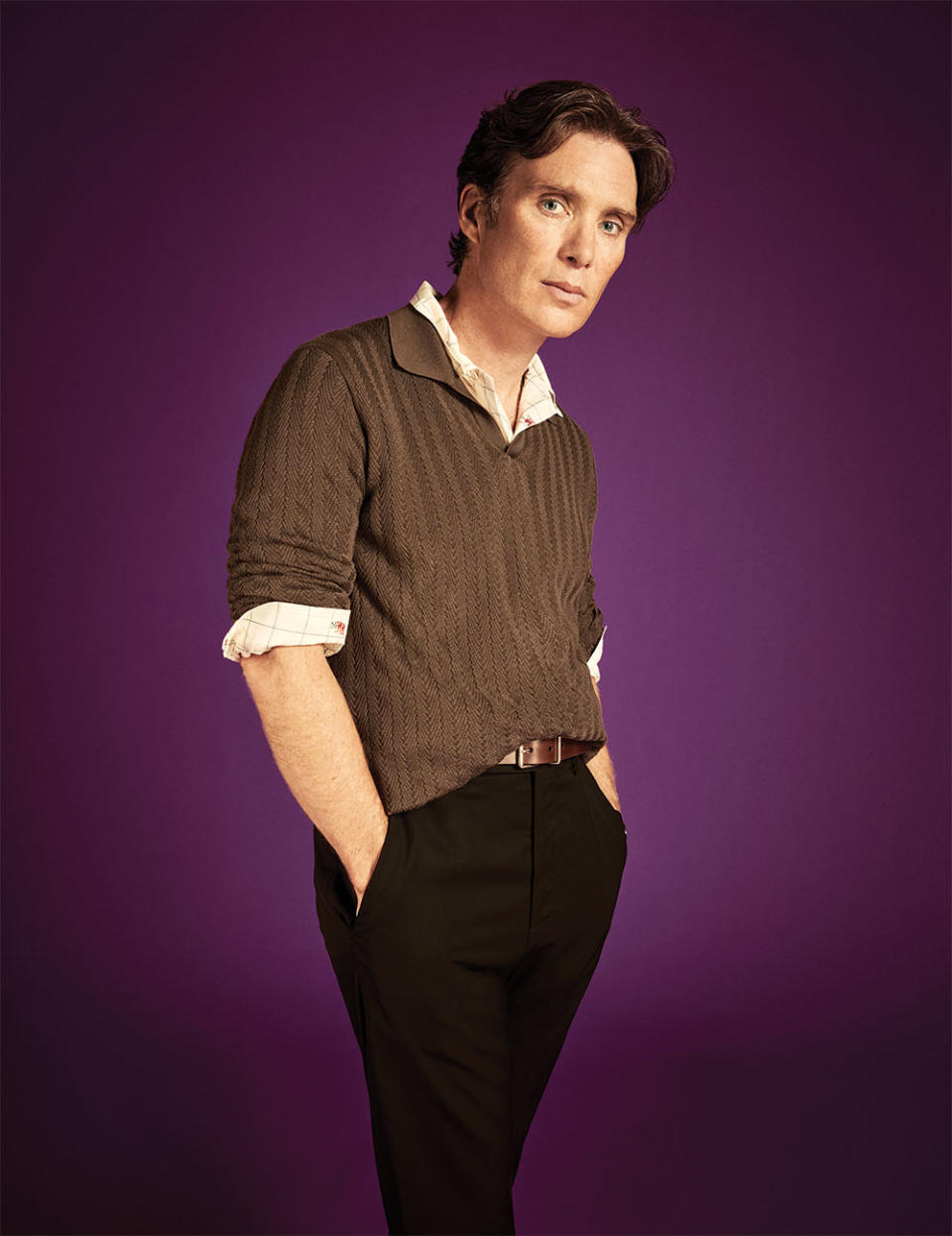
***
Oppenheimer is Murphy’s sixth film with Nolan. He has always played supporting roles: the Scarecrow in the Dark Knight films, a businessman in Inception, a shivering soldier in Dunkirk. Nolan says he doesn’t have actors in mind when he writes, but when he finished his Oppenheimer draft, casting the lead was obvious. “I’ve been staring at the cover of the book American Prometheus for so many months, and there’s this photograph, black and white, a light blue-eyed stare, very intense, of this guy,” Nolan says. “And I thought, ‘Well, I know who could do that.’ ” Murphy, who also played a physicist who designed a bomb in the 2007 Danny Boyle science fiction movie Sunshine, jokes that he has “resting physicist’s face.” Murphy was at home in Ireland when Nolan called, offering the role of a lifetime. “He’s just so understated and matter-of-fact and British,” Murphy says of Nolan. “It was like, ‘Cillian, look, I have a script, it’s Oppenheimer and I’d like you to play Oppenheimer.’ That was it.”
Nolan prefers to hand-deliver his scripts rather than email them. “People will say, ‘Why do you work in secrecy?’ ” Nolan says. “Well, it’s not secrecy, it’s privacy. It’s being able to try things, to make mistakes, to be as adventurous as possible. And to be able to sit with somebody who’s just read what you’ve written and get their take on it, see how they connect with it in a very human, face-to-face way.” In Murphy’s case, Nolan flew to Ireland and waited while the actor read the document; Downey went to Nolan’s home in L.A. to read it. “I was like, ‘Wow,’ ” Downey says. “And he was like, ‘So will you do it?’ I was like, ‘Uh, usually, there’s 38 phone calls.’ But he’s Chris Nolan. So I was like, ‘Yeah, I think I will.’ “
Nolan’s movies have made more than $5 billion at the global box office, and he is almost singular in his ability to attract broad audiences not only to franchise fare like the Dark Knight trilogy but also original ideas like 2010’s Inception ($836.8 million) and 2014’s Interstellar ($773.8 million) and historical fare like 2017’s Dunkirk ($525.2 million). After being delayed three times because of the COVID-19 pandemic, Tenet was the first Hollywood tentpole to launch in theaters in the summer of 2020, a time when most U.S. cineplexes were operating at less than half capacity. In that diminished box office environment, the movie made $363.7 million worldwide, but the film and the pandemic helped usher in the end of Nolan’s relationship with what had been his longtime home studio, Warner Bros. When the company announced in December 2020 that it was dropping its entire 2021 theatrical slate directly onto its then-nascent streaming service, HBO Max, much of the industry complained in private, but Nolan was the most prominent director to publicly criticize the studio. “They don’t even understand what they’re losing,” Nolan said in a statement to THR at the time. (Nolan is himself a voracious moviegoer with varied and sometimes surprising tastes — for instance, he and his family watch Love Actually every Christmas and he enjoys the Fast & Furious franchise. “He watches every single movie, of every type of genre,” says Blunt. “And you never hear him shit-talk other people’s movies. He knows how hard it is to direct a great movie.”)

The current writers strike is driven by many of the same issues that frustrated talent about Warner Bros.’ pandemic-era policies, including transparency and residuals. “In the last few years, it’s very often not been clear what a studio’s intention is,” Nolan says. “Why they’re making a particular project, what they’re then going to do with it, how they monetize it. Do they monetize it at all? Is it a loss leader to drive subscriber growth? A lot of the reason that there’s a strike right now is we have to make the streamers pay the true cost of production. The business models don’t work right now.”
Nolan says he voted to ratify the contract the Directors Guild struck with the Alliance of Motion Picture and Television Producers in June. “The parameters of the deal are certainly going to help the other guilds in negotiations,” he says. “It’s very important that all the guilds get a great deal right now. It is a transitional moment. The move to streaming has thrown up all kinds of economic issues with all the guilds and in particular, the writers. And now is the moment that we need to fix those things.”
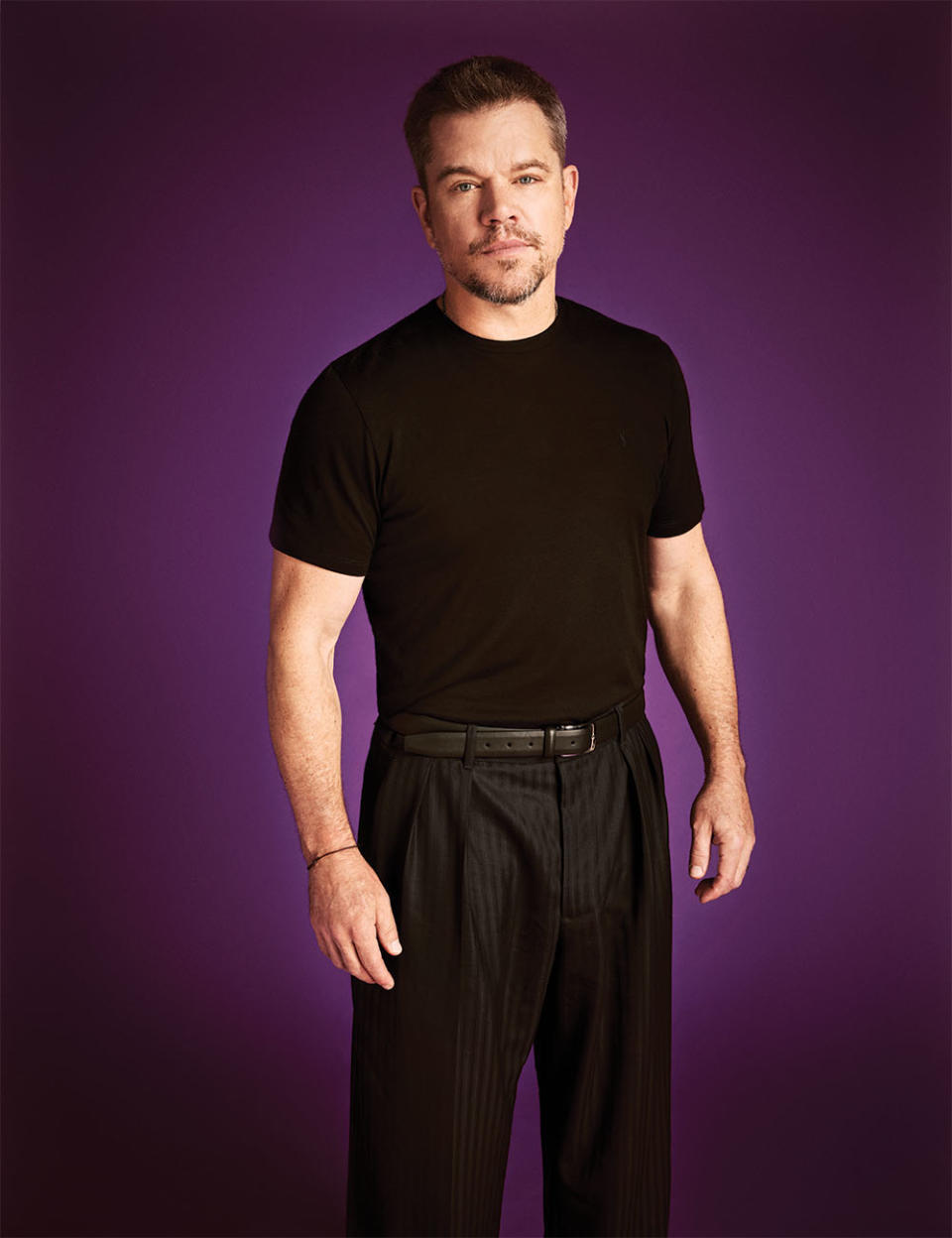
In mid-2021, Nolan had left Warner Bros. and was meeting with the other major studios about making Oppenheimer. “I told them it was a three-hour film,” Nolan says. “I told them it would be R-rated. I told them what the budget would be. Emma and I, we’ve taken a view that telling studios exactly what we’re doing and sticking to that is the clearest, simplest thing to do.”
Through their kids, Nolan and Thomas were friends with Donna Langley, now the chairman and chief content officer of the NBCUniversal studio group, and Langley saw Nolan as an ally in the studio’s attempt to resuscitate the theatrical business. “Coming out of the pandemic, we were wondering what would make audiences come back to theaters,” says Langley. “[Nolan] is one of a handful of directors whose name alone inspires audiences globally to go to the movie theater.” Universal guaranteed Nolan an exclusive theatrical release for between 90 and 120 days on Oppenheimer, far longer than the studio’s pandemic-era exclusive windows, which ranged from 17 to 31 days. “Given Chris’ experience with his prior movie, it was clear the theatrical window was important to him,” Langley says.
By February 2022, production was underway, with locations including Oppenheimer’s actual house in New Mexico and Albert Einstein’s office in Princeton, New Jersey. The film secured permission to shoot at the White Sands Missile Range, where the Trinity test occurred, but because it is still an active military base, the hours were inconvenient, and instead production designer Ruth De Jong re-created the site in the desert. Some of the scientists followed the shoot and worked as extras. “You’d be in a scene and you’d casually chat to someone and he was a high-end physicist working in Los Alamos,” says Murphy.
Nolan’s sets feel different from most, say the actors. “There aren’t a lot of people running around on phones. There’s no video village. There’s no chair with your name on it,” says Downey. “It was focused and Spartan, almost a monastic approach to what we’re doing.” Despite Nolan’s reputation for precision, there are no marks on the floor for actors to hit. “He’s like, ‘We don’t need to put down marks because you shouldn’t be looking for them, and my team should be able to find you wherever you are,’ ” Downey adds. “It’s actually kind of super loose within this controlled format.” Nolan’s notes to his actors are concise and focused. “We did a scene a few times and I wasn’t getting it,” says Murphy. “I may have come in a bit hard. He leaned over to me and said, ‘He’s not a boxer, he’s a chess player.’ Boom. You just go, ‘Totally get it.’ You get used to these big, huge fucking cameras moving toward you, but you’re really there in the moment doing it as truthfully as you possibly can.”
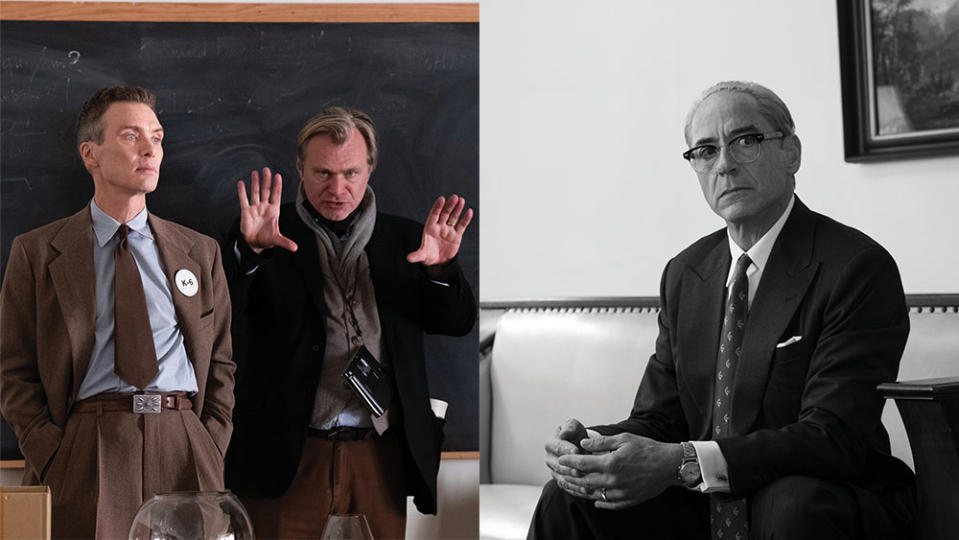
***
Early on in his research, Nolan had a conversation with physicist Robbert Dijkgraaf that signaled a potentially enormous problem for the film. Dijkgraaf explained that in the early 20th century, during the transition from classical physics to quantum mechanics, “one of the things that had been challenging and alienating for physicists was that, as [Dijkgraaf] put it, they could no longer visualize the atom,” Nolan says. “And of course, to me that was very frightening. I said to him, ‘Well, that’s my job. That’s what I have to do. What do you mean you can no longer visualize it?’ He said, ‘Well, you can’t because it’s energy fields lying on top of each other. It’s not ping-pong balls flying around.’ “
Nolan came to the conclusion that he would rely on his editor, Jennifer Lame, to help him create a visceral feeling of the physics, layering visual effects, sound and Ludwig Göransson’s score. “I got excited by, how can cinema help you understand something not intellectually, but emotionally, that it’s really impossible to visualize in other ways?” Nolan says. He relied on special effects supervisor Scott Fisher and visual effects supervisor Andrew Jackson to help him create a representation of the physics on film through the use of practical effects — the effects department’s experiments included smashing ping-pong balls together, throwing paint at a wall and shooting at various frame rates. Out of a desire to preserve the illusion, Nolan declines to say what actually created the finished effect, except that it is definitely not computers — there is no CGI in the film at all. “CG inherently is quite comfortable to look at,” Nolan says. “It’s safe, anodyne. And what I said to Andrew on Oppenheimer is, ‘This can’t be safe. It can’t be comfortable to look at it. It has to have bite. It’s got to be beautiful and threatening in equal measure.’ “
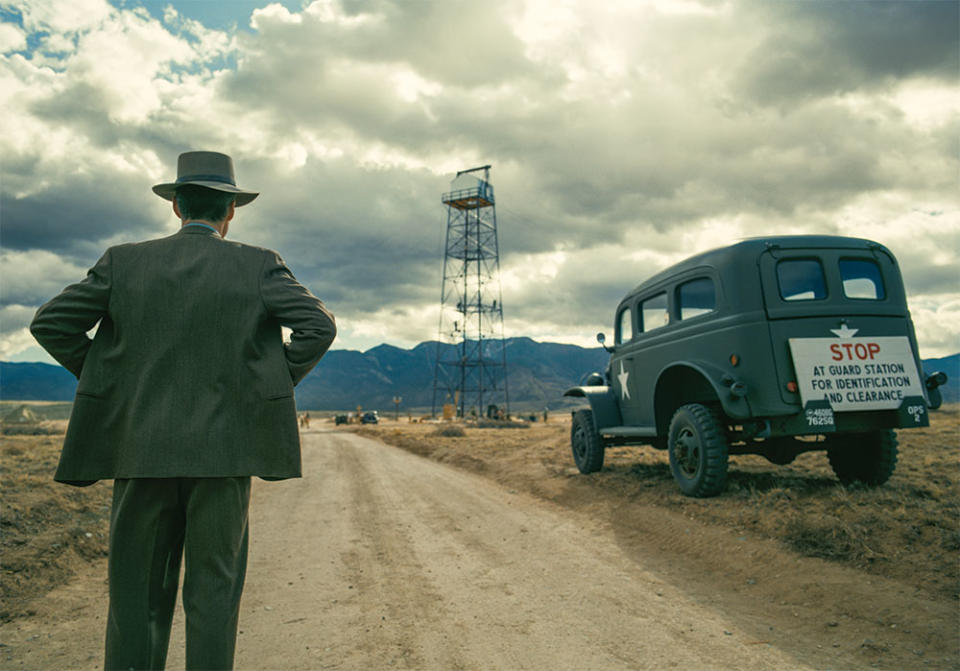
Oppenheimer is eerily topical. In March, against the backdrop of the war in Ukraine, the United Nations said the risk of nuclear weapons use is higher now than at any time since the Cold War. Another technological innovation, artificial intelligence, has prompted scientists to do the kind of soul-searching that Oppenheimer eventually did — after the bombings of Hiroshima and Nagasaki. “Oppenheimer’s story is the most dramatic example I know of the fraught relationship between science and government,” Nolan says. “The relationship between technology and government right now is one of the most difficult and frightening areas.”
Oppenheimer is set to open in theaters opposite Warner Bros.’ Barbie, which appears likely to win the weekend, a phenomenon the extremely online have dubbed “Barbenheimer” in a series of memes, including one with an atomic mushroom cloud exploding in a plume of pink smoke. Universal struck an unusual agreement with Imax for Oppenheimer to have all the Imax screens in North America for three full weeks — a move that has frustrated Tom Cruise, whose Mission: Impossible — Dead Reckoning, Part One opened a week earlier. “There is room for them all to do well,” says Langley. Nolan’s movies, she notes, tend to attract audiences far beyond opening weekend. “You see the movie once, you want to go back and see it again,” Langley says. “That’s going to help.”
A major part of the pitch to audiences will be that this is a movie you’ll need to get off the couch to fully appreciate. “This is not a biopic, this is an experience,” says Blunt. “There’s no way you’re going to feel the scope of it watching it on your iPad.”
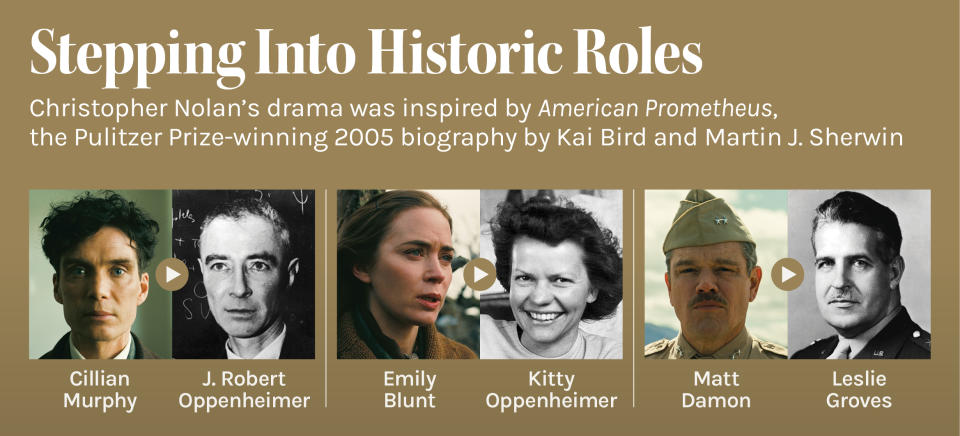
This story first appeared in the July 14 issue of The Hollywood Reporter magazine. Click here to subscribe.
Best of The Hollywood Reporter
Natalie Portman at Cannes: "I Need to Leave the Drama for the Screen"
Ailing ‘Superman’ Star Valerie Perrine Finally Finds Her Hero: "The Guy Should Be Sainted"

 Yahoo News
Yahoo News 
